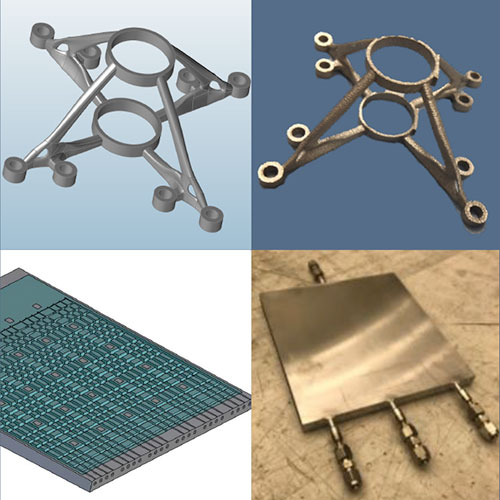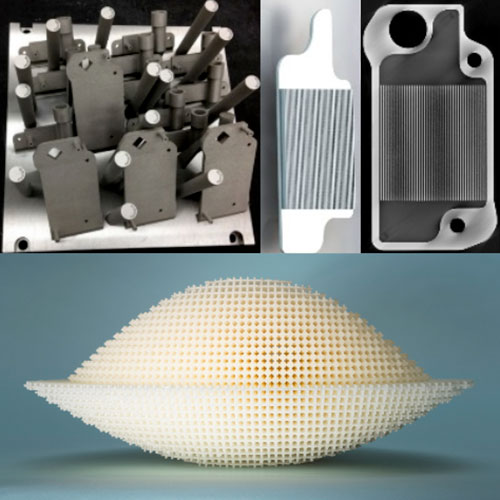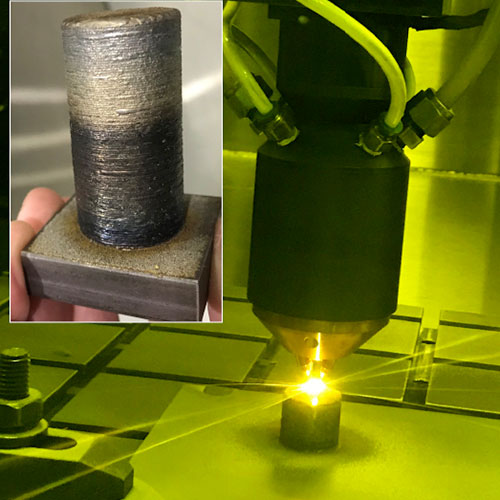Additive manufacturing represents a new frontier in the development of optimized, unique geometries and multifunctional structures, and in prototyping new ideas at reduced schedule and cost. In partnership with other NASA centers, industry, and academia, JPL is paving the way in additive manufacturing within design and build processes and applications to enable new opportunities for future missions and to increase science return.

Planetary Robotics and Landers
JPL is using additive manufacturing to enable future robotic landers. This includes structural applications (such as the topologically engineered and printed prototype Mars helicopter motor mount), as well as modeled and printed parts (such as two-phase heat exchangers for thermal management). Additive manufacturing may also enable robotic mobility through printed wheels, gears, and actuators.

Multifunctional Spacecraft
JPL is using additive manufacturing in innovative multifunctional spacecraft applications. It allows structural components to be combined with function (such as the heat exchanger printed for MOXIE or a printed Luneburg lens spacecraft antenna). Future applications will allow more advanced functions, such as shape morphing and printed metal fabrics.

New Materials for Extreme Environments
JPL is a leader in the development of new metal alloys and composites for use in space. A new additive manufacturing technology, directed energy deposition, allows JPL to create functionally graded metals with more than one alloy composition in the final part. These advanced metals have the ability to change properties throughout a printed part, including magnetism, wear resistance, and strength.